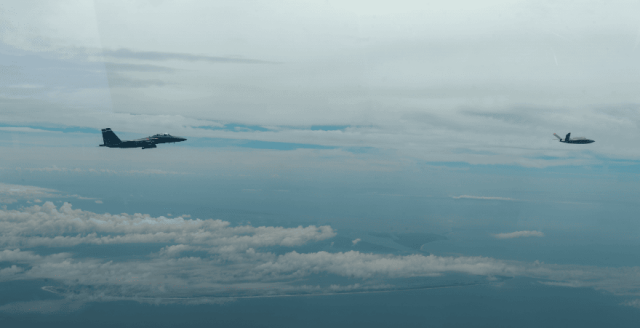
The United States Air Force Research Laboratory (AFRL) successfully completed the inaugural flight of the XQ-58A Valkyrie uncrewed aircraft, marking the first-ever flight of artificial intelligence agents (algorithms) controlling an uncrewed jet aircraft.
The three-hour sortie took place at the Eglin Test and Training Complex, Florida, on July 25, and saw an F-15E Strike Eagle from the 96th Test Wing’s 40th Flight Test Squadron fly in formation with the XQ-58A Valkyrie.
As part of the Skyborg Vanguard program, the flight test marked a two years-long AFRL mission aimed to reduce risk to aircrews by integrating their activities with AI-capable unmanned aerial vehicles.
According to the AFRL, the algorithms responsible for controlling the XQ-58A Valkyrie underwent extensive maturation through “millions of hours in high fidelity simulation events, sorties on the X-62 VISTA (a modified F-16 fighter jet flown by AI), hardware-in-the-loop events with the XQ-58A, and ground test operations.”
“The mission proved out a multi-layer safety framework on an AI/ML-flown uncrewed aircraft and demonstrated an AI/ML agent solving a tactically relevant ‘challenge problem’ during airborne operations,” said Col. Tucker Hamilton, Air Force AI Test and Operations chief and 96th Operations Group commander.
“This sortie officially enables the ability to develop AI/ML agents that will execute modern air-to-air and air-to-surface skills that are immediately transferrable to the CCA program.”
Developed by AFRL’s Autonomous Air Combat Operations team in collaboration with Kratos Defense & Security Solutions, the XQ-58 is part of AFRL’s Low-Cost Attritable Aircraft Technology (LCAAT) portfolio, designed to serve as an escort for the F-22 or F-35 as a runway-independent, reusable “wingman” UAS controlled by the parent aircraft for a range of missions.
“AI will be a critical element to future warfighting and the speed at which we’re going to have to understand the operational picture and make decisions,” said Brig. Gen. Scott Cain, AFRL commander.
“AI, Autonomous Operations, and Human-Machine Teaming continue to evolve at an unprecedented pace and we need the coordinated efforts of our government, academia, and industry partners to keep pace,” concluded Brig. Gen. Cain.


























